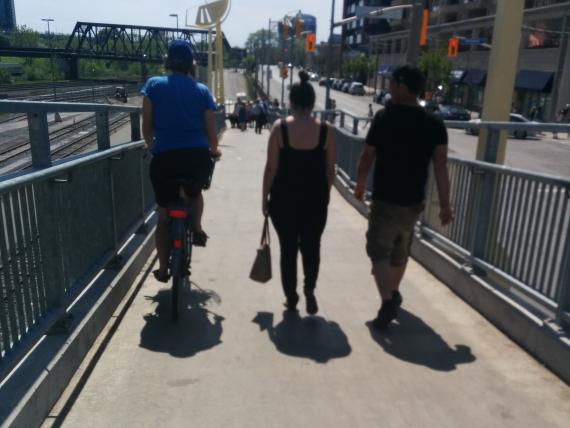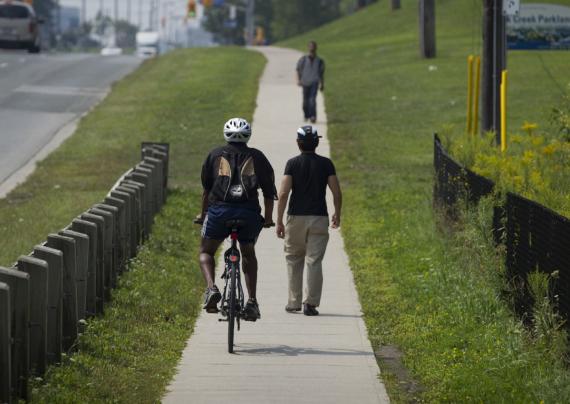Max snapped this photo one morning a few weeks ago at John and Queen, looking north. I was completely flabbergasted at first. As many of my readers might now, there was a long extended fight with Councillor Vaughan and a bunch of planners who were trying to plan cyclists out of the picture and create a pedestrian arcade (but with cars) out of John Street. This seemed like a complete 180 where cyclists were actually given their own space instead of treated like pariahs.
But, no, it was not to be. Instead this is a pilot project until October to carve out a much larger pedestrian zone with a row of planters. Instead of being a protected bike lane much like I've seen in Vancouver, it's a "pedestrian" zone that seems most of the time to have few pedestrians (perhaps a bit heavier next to the restaurants which had overtaken much of the public space for their patios).
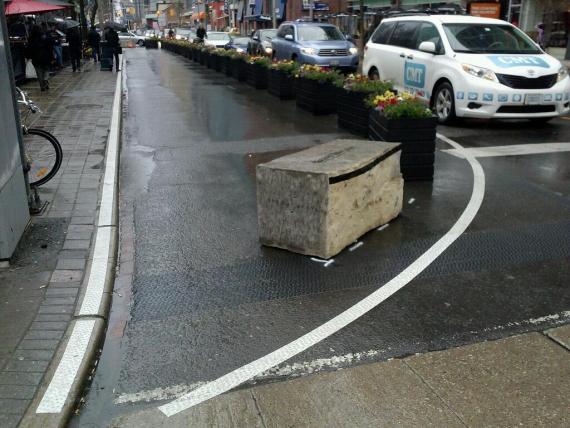
Cyclists don't know what to do with the space. Some people are still using it as a bike lane while other cyclists choose to squeeze next to a multi-block long line of cars (photo by Michal). This is what I saw:
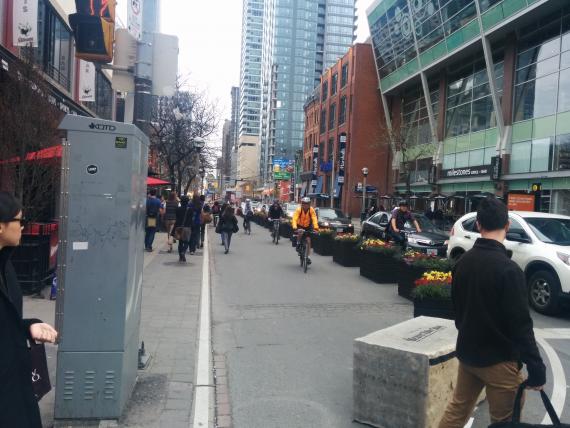
While the whole John Street Cultural Corridor project is currently unfunded, the EA was completed and left out cyclists. Or, to be more accurate, they assumed cyclists would just nicely mix in with car traffic like we're forced to everywhere else.
But compared to the EA, this row of planters is even worse for cyclists. At least in the EA the plan was to have a "flexible boulevard" and a "non-barrier" curb to blur the line between the pedestrian space and the road. People on bikes would have more options in going around traffic jams of cars. In the EA they said:
A continuous non-barrier curb on both sides of the street to enable a seamless transition into a pedestrian-only space for events; for vehicles to mount the flexible boulevard for deliveries or drop-offs; and, to accommodate additional vehicular and cycling maneuvering on either side of the road in emergencies.
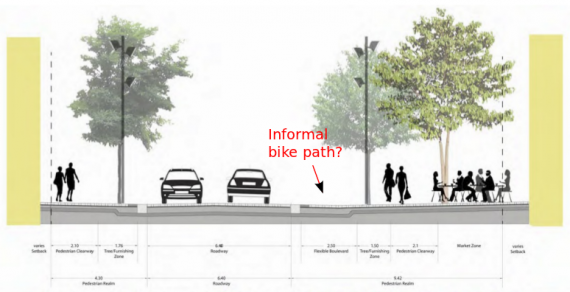
Or like this real-world example at the Prince's Gate at the Ex:

But instead, this design seems to have imposed purgatory for anyone on a bike.
What are the lessons here?
One, we can't just expect bikes to disappear, no matter how much we're in love with "pedestrianizing" the John Street Corridor. Did you expect the cyclists to nicely wait behind the truck? Good luck with trying to re-engineer human nature.
Two, by doing things half-ass, by trying to increase the pedestrian space while letting cars still rule the streets, we are making the space worse. Planners should have made it much more inconvenient for drivers to choose John Street as a through-street. John could be made for local vehicles only, much like a bicycle boulevard, which would greatly reduce the traffic while still allowing cars to exist there.
